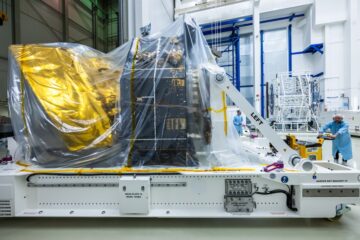At certain times of the year, the Earth passes through streams of dust left behind by comets, leading to a natural fireworks display: a meteor shower. One of the best-known is the August Perseids; at the peak of the shower, one can see about 100 meteors per hour on a dark clear night.
Comet 2P/Encke, a comet that goes around the Sun once every 3.3 years, has been linked to several strong meteor showers at Earth, the so-called Taurid Complex. One outstanding feature of the complex is the so-called Taurid Swarm, a cloud of Encke particles much larger than typical cometary dust, producing bright fireballs in the night sky. Unlike so-called annual showers, the Swarm does not appear every year and was first noted when several large objects hit the Moon in 1975 and the impacts were recorded by the seismographs left behind by the Apollo astronauts.
One of the scientists studying the Swarm is AOP (now retired) astronomer Dr David Asher, who in the early nineties worked to produce one of the first models of the Swarm. Since then, the Swarm has been detected on several occasions, one of the more recent returns being in 2015. Interestingly, Swarm returns appear to correspond exactly to those predicted by Dr Asher, vindicating the model and raising confidence in predicting future returns.
It is predicted that the Taurid Swarm will again encounter Earth in the Autumn of 2022. For the observer, it means that bright Taurid fireballs may appear at any time from late October until mid-November. The presence of a Full Moon on 8 November makes this weekend and the whole of next week prime viewing time to witness the full splendour of a Taurid streaking across the night sky.
That being said, do not expect the sky to be awash with fireballs as soon as you raise your gaze to the Heavens.
Fireballs are exceedingly rare events, so even with our passing through the Swarm and raising the ambient fireball rate by several times, consider yourself lucky if you see one every few hours. The best time to look for the Swarm is around midnight local time when the Taurid radiant – the location on the sky where Taurid meteors appear to emanate from – is highest. Do look up but not in any particular direction; the fireballs will make their presence known by virtue of their sheer incandescent brightness, that makes them shine through even moderately-thick cloud.
If you miss this opportunity, the next suitable Swarm encounter is in 2032.
Note: Meteor research at AOP dates back to the work of E.J. Opik in the 1950s (see eg McFarland & Asher, Proc. Intl. Meteor Conf. 2010) and continues to this day.
Additional material:
All that you ever wanted to know about meteors and were afraid to ask, at the website of the International Meteor Organisation.
See here for information of the Taurid Swarm and how to observe it, based on work by meteor expert Auriane Egal.



0 Comments